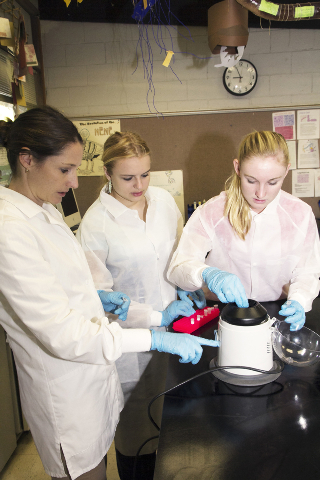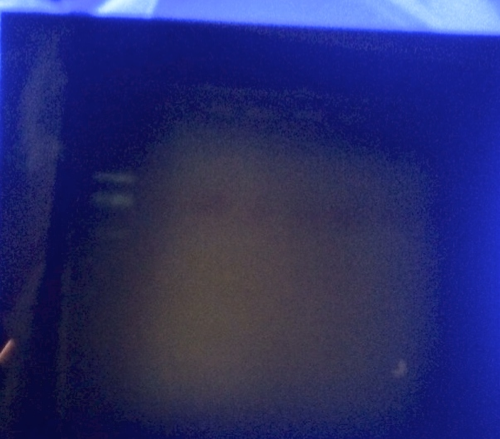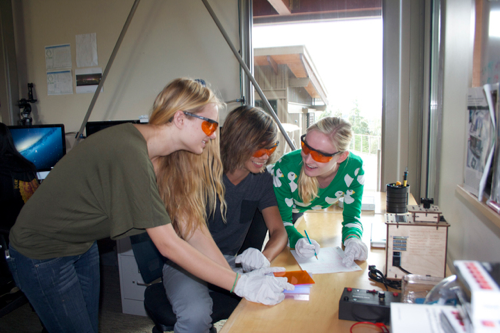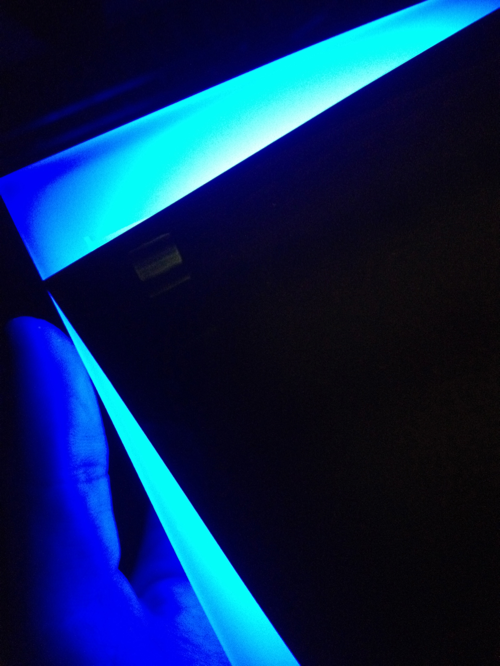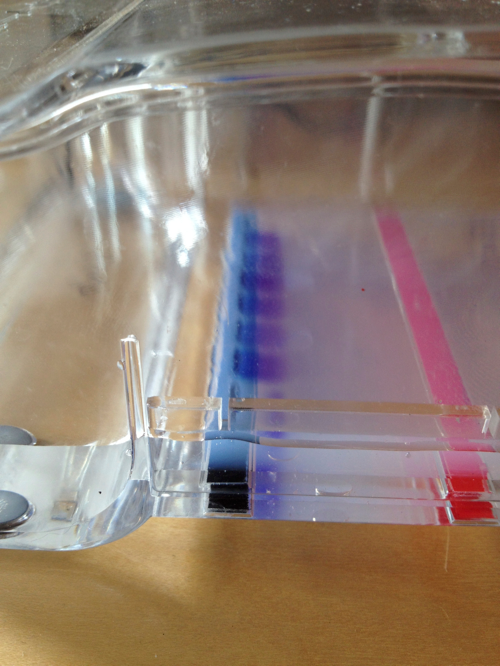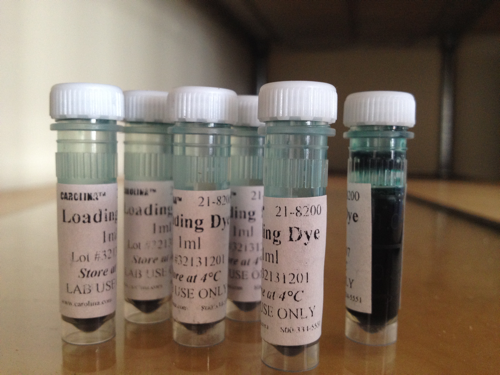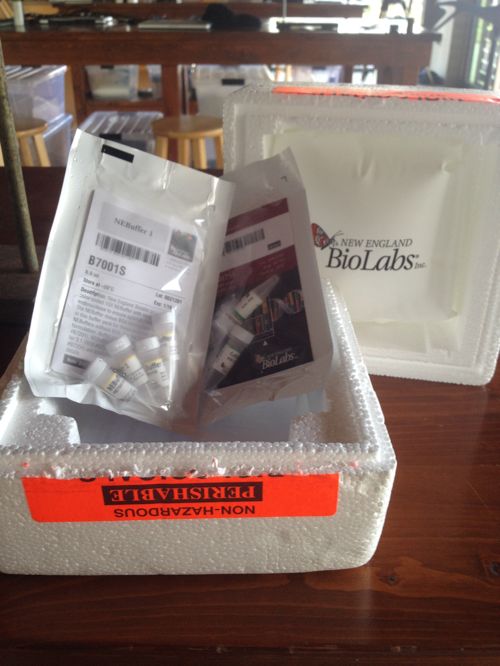We have brought our samples through PCR. We are currently in the process of casting our agarose gels for gel electrophoresis. Because we are constructing these gels with the new Syber Safe DNA stain, I have included a procedure for casting below.
ONE GEL requires approximately:
30 microliters (µL) of TBE buffer
3 microliters (µL) of Syber Safe DNA stain (**approximately one µL of stain is required for every 10 µL of TBE buffer used)
0.6 grams of agarose powder (if increasing amount, keep the agarose powder at a 2% mixture with the TBE buffer)
Procedure:
1. Measure out 30 µL of TBE buffer in a graduated cylinder.
2. Measure out 0.6 grams of agarose powder on a sensitive scale.
3. Combine TBE buffer and agarose powder in a small flask. DO NOT MIX
4. Add 3 µL of Syber Safe DNA stain to the flask. DO NOT MIX
5. Plug the top of the flask with Kim wipes, to avoid overflows during the boiling process.
6. Microwave in small 10-15 second increments until the liquid in flask seems clear or before it begins to spill over.
7. Allow flask to cool until it is safe to touch.
8. Pour mixture into a gel casting tray.
9. Allow to solidify. (Could take upwards of 20 minutes)
10. Remove sample comb and side stoppers.

